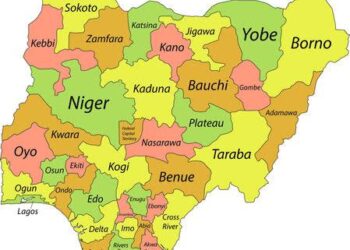Poor telecom services in the South East, particularly Anambra has been attributed to inadequate Telecom Infrastructure in the state, ANAMBRA PEOPLE reports. Recent NCC report on the states with the largest telecom infrastructure in the country indicates the absence of Anambra State on the list of top 5 states with largest telecom infrastructure.
Recall that ANAMBRA PEOPLE had previously reported top 5 states with the largest internet subscribers in the country according to NCC, where Anambra did not make it among the top 5 states in Nigeria. Experts have expressed their concern over this development which might be a factor hindering communication and ease of doing business in the state.
According to the report, telecommunication services in the two South-Western States of Lagos and Ogun, and Rivers State are better than that of other states in the country. This is because these three states had the largest concentration of telecommunications towers installed in Nigeria as of December 2021.
Specifically, Lagos had the largest number of towers deployed as of December 2021, as it recorded 5,851 towers. Ogun State came second in terms of installed towers with 2,418, while Rivers State had 2,049.
The Federal Capital Territory (FCT) Abuja, was the fourth on the list of states with the largest telecom infrastructure. It had 1,944 towers, followed by Oyo and Edo States, which had 1,713 and 1,556 installed towers respectively.
The data also revealed that states such as Kebbi, Bayelsa, Ebonyi, Gombe, Yobem, and Zamfara had the least telecom infrastructure in the country.
The quality of service received in an area depends on the number of towers in that area and their capacity.
Each tower has the capacity to serve a number of users, hence when too many phone users are on a particular tower, the network becomes congested, leading to poor quality of service.
A state or an area with a high number of towers tends to enjoy better quality service.
Speaking on the telecoms infrastructure gaps in the country, the Executive Vice Chairman of NCC, Prof. Umar Danbatta said that both state and non-state actors are working towards bridging the gap through the implementation of the Nigerian National Broadband Plan (NNBP) 2020-2025, an initiative of the Federal Government, being driven by NCC and conceived to address infrastructure gaps in the telecom and ICT sector.
“One of the identified gaps to robust connectivity was the fact that inadequate infrastructure remained a bane to achieving desired broadband penetration to boost access to services that will enhance economic growth and development. The Commission recognizes the importance of infrastructure expansion and this explains its unequivocal commitment and desire to see the licensed Infrastructure Companies (InfraCos) work speedily and with precision to cascade fibre to the hinterland, in order to enhance robust telecom service provision,” he said.
He said the InfraCo licensees, expectedly, also prioritize stipulated licensing conditions to ensure expected milestones set by the Commission are achieved.
The EVC stated that Commission’s target for licensing the infraCos was to ensure the deployment of fibre infrastructure needed for pervasive broadband penetration across the 774 local government areas (LGAs). This, he said, will ensure access to telecoms services in the hinterlands of the country, and by so doing address the challenges of access confronting the unserved and underserved areas of the country.






